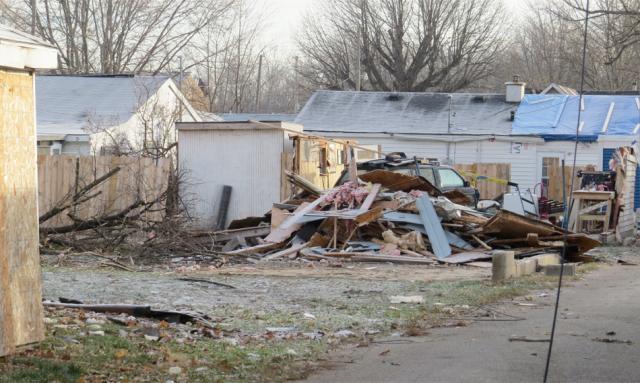
The American Legion’s National Emergency Fund provides immediate financial assistance to veterans who qualify.
Joe DeLaCruz was unfamiliar with The American Legion’s National Emergency Fund (NEF) last May when tornadoes ravaged Moore, Okla. He soon learned about the program while assisting the Department of Oklahoma with relief efforts, helping hundreds of veterans apply for and receive NEF grants.
Now, as chairman of the Department of Oklahoma’s disaster relief program, DeLaCruz is educating local Legionnaires on how to be prepared when an emergency strikes, how to fill out NEF and Temporary Financial Assistance (TFA) applications, and how to help veterans if they are not eligible for either NEF or TFA grants.
"A disaster is going to happen," said DeLaCruz, a member of Post 111 in Edmund. "No matter what the disaster is, it is going to affect veterans."
NEF is National Commander Dan Dellinger’s primary fundraising goal. Donations have surpassed $100,000 but still have a long way to go to reach Dellinger’s goal of $1 million.
Dellinger witnessed the significant need for the NEF program this past Thanksgiving when he visited Lebanon, Ind., and saw firsthand the severe destruction caused from a series of tornadoes that struck Indiana, Illinois and nine other states.
"This is why the National Emergency Fund is so essential for our organization," Dellinger said. "That is why I urge everyone to take the opportunity, when you have a fundraiser, to please help us. We have to be there for our veterans and their families."
In Illinois, Past National Commander Marty Conatser and other Legion members from the department’s disaster relief committee visited Legion Family members affected by the tornadoes to help them apply for NEF assistance.
"We knocked on doors of (Legionnaires) whose homes weren’t even impacted, and they thanked us for checking in on them," Conatser said. "It’s the Legion Family stepping up to make sure you’re all right. Just because your house is still there doesn’t mean you weren’t impacted by the disaster."
The Department of Illinois’ disaster relief committee consists of 10 members who are the first Legion responders when a disaster strikes. Their first task is to visit the Legion post in the area that was devastated. Once there, they look at a map of the community and identify all post members whose homes were in the path of the destruction. They then personally visit each home to check on the Legionnaires and their families and assist with applying for NEF grants.
"The first 24 hours after any disaster, when things are in disarray, is really important," Dellinger said. "Legionnaires need to help those affected get applications filled for aid and the local posts need to be aware if anyone needs assistance."
The American Legion created an NEF response kit to assist department and post leaders on best practices before, during and after emergencies. The kit contains brochures that explain how to set up an NEF response team, locate affected Legion Family members, assist victims in filling out NEF applications and generate good public relations. All material featured in the NEF response kit can be found under Internal Affairs on the Legion’s publication’s web page and downloaded: www.legion.org/publications
Along with the NEF brochures, below are helpful tips to follow when a disaster strikes:
- Publicize through flyers, media and Facebook where your staging area is located so veterans can find you.
- Visit disaster areas in an American Legion marked car and wear a Legion cap, shirt or jacket to let veterans know you are there to assist them.
- Communicate with disaster-relief nonprofit organizations, and police and fire departments to reach veterans.
- Let grant applicants know that National Headquarters will not mail the check directly to them. The check will first be mailed to the respective department headquarters.
- Identify how NEF recipients will receive their checks.
- Dispatch

